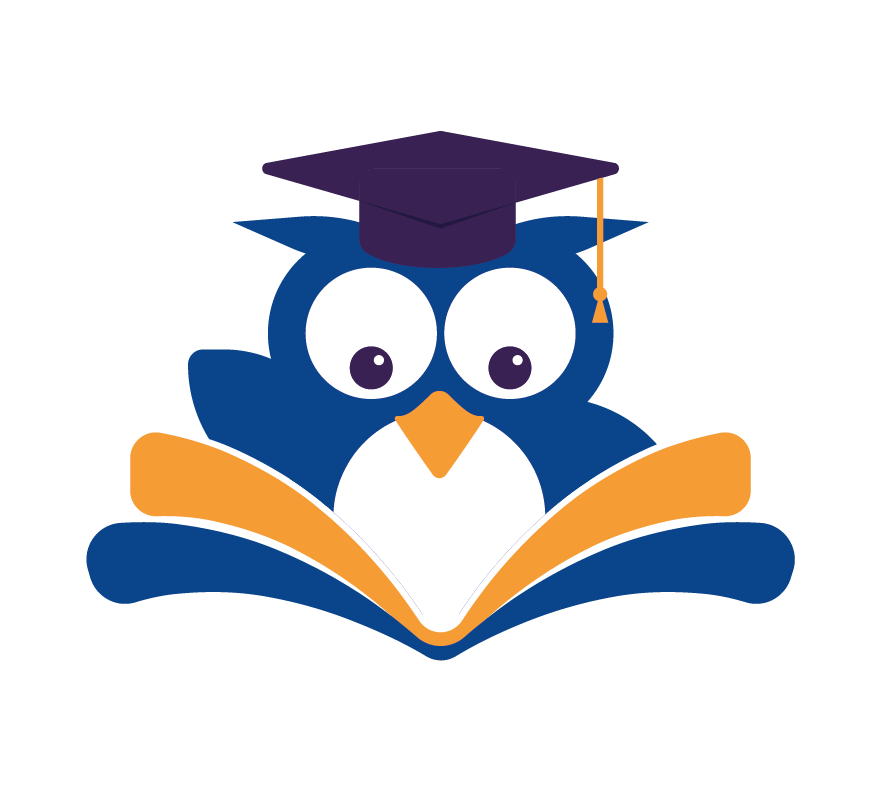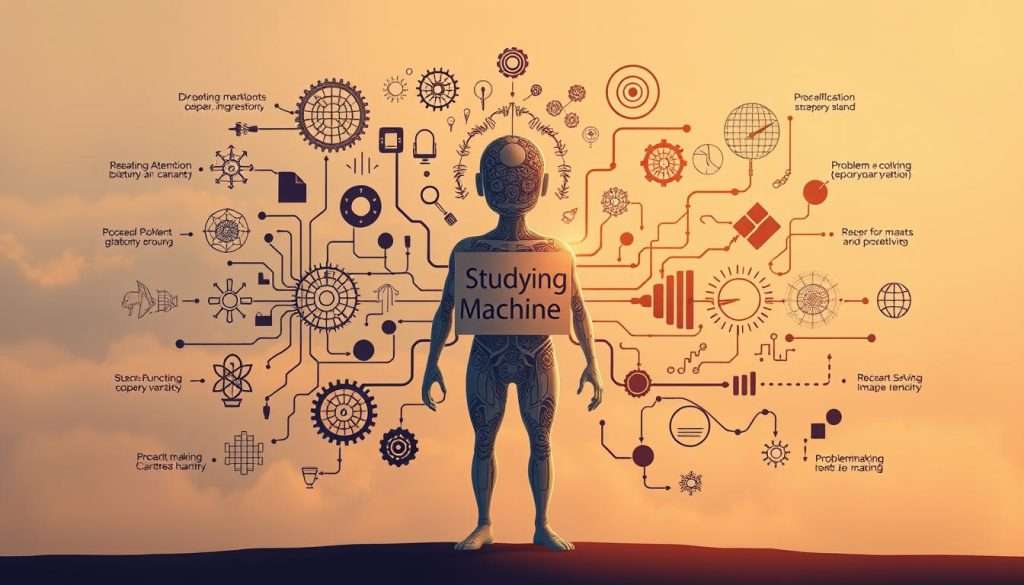Have you ever thought about your own thinking? Knowing how your brain works can change the game in learning. Thinking about thinking lets you control your mind, beat obstacles, and reach your goals.
Dr. Rod Lucero and Shelly Morrell say metacognition is about being aware of your thinking. By improving these skills, you can increase your learning power and succeed in school. Studies show metacognition is a top way to help students do better.
Key Takeaways
- Understand the concept of metacognition and its benefits.
- Learn how to develop metacognitive skills for better learning.
- Discover practical strategies to boost your learning potential.
- Improve your academic performance with metacognitive techniques.
- Take control of your learning and achieve your goals.
What Is Metacognition and Why Does It Matter?
Have you ever thought about your own thinking? This is called metacognition. It’s about knowing and understanding your thoughts, which helps you learn better. By improving your metacognitive skills, you can learn more efficiently.
Metacognition has two parts: knowledge and regulation. Knowledge is knowing how you think and learn. Regulation is controlling your thoughts for learning. Understanding these helps you learn better.
The Science Behind Thinking About Thinking
Studies in cognitive psychology show metacognition is key to learning. It’s connected to executive functions, like planning and problem-solving. Being aware of your thoughts helps you learn better.
People with strong metacognitive skills do well in school. They know their strengths and weaknesses, and adjust their learning. This helps them reach their goals.
How Metacognition Impacts Learning Outcomes
Metacognition helps with self-regulated learning. It lets you set goals, track your progress, and change your learning plan. This makes learning more effective and helps you remember things better.
| Metacognitive Skill | Impact on Learning |
|---|---|
| Planning | Helps in setting realistic goals and choosing appropriate learning strategies. |
| Monitoring | Enables tracking of progress and identification of areas needing improvement. |
| Evaluation | Facilitates assessment of learning outcomes and adjustment of strategies. |
As John Flavell, an educational psychologist, said, “Metacognition refers to one’s knowledge concerning one’s own cognitive processes or anything related to them.” By improving your metacognitive skills, you can control your learning. This leads to better academic and professional success.
The Cognitive Framework of Metacognition
To improve your learning, it’s key to understand metacognition. It has two main parts: metacognitive knowledge and metacognitive regulation. By working on these, you can greatly improve your learning results.
Metacognitive Knowledge: Understanding Your Thinking Processes
Metacognitive knowledge is about knowing how you think. It includes declarative knowledge (knowing about yourself as a learner), procedural knowledge (knowing how to use learning strategies), and conditional knowledge (knowing when and why to use certain strategies). Having strong metacognitive knowledge is like having a map of your brain. It helps you get through tough learning tasks.
Metacognitive Regulation: Controlling Your Learning Approach
Metacognitive regulation is about managing your learning. It involves planning, monitoring, and checking your learning. Good metacognitive regulation helps you stay focused, overcome challenges, and reach your learning goals.
| Metacognitive Component | Description | Example |
|---|---|---|
| Declarative Knowledge | Knowing about yourself as a learner | Recognizing your strengths and weaknesses |
| Procedural Knowledge | Knowing how to use learning strategies | Using techniques like summarization or self-quizzing |
| Conditional Knowledge | Knowing when and why to use strategies | Applying strategies appropriately based on the task |
The Benefits of Developing Strong Metacognitive Skills
Getting better at thinking about your own thinking can change your learning game. It helps you learn more and succeed more. This is because you can reflect on your learning process and tweak it as you go.
Enhanced Problem-Solving Abilities
Strong metacognitive skills boost your problem-solving skills. You can see where you need to get better and find new ways to solve tough problems. This lets you face challenges with confidence and creativity.
Improved Knowledge Retention and Transfer
Metacognitive skills also help you keep and use what you learn better. Knowing how you learn helps you hold onto new info and use it in different ways. This makes it easier to link new ideas to what you already know and remember them when you need to.
Greater Academic and Professional Success
In the end, strong metacognitive skills can lead to greater success in school and work. By controlling your learning and being strategic, you can reach your goals faster. This boosts your confidence and motivation in all areas of your life.
How to Assess Your Current Metacognitive Abilities
Understanding your metacognitive abilities is key to better learning. It’s about knowing what metacognition is and how it affects your learning.
Self-Assessment Questionnaires and Exercises
Self-assessment tools are great for checking your metacognitive skills. They let you see how you learn, what you’re good at, and what you need to work on. Reflecting on your learning can give you important insights.
Identifying Your Metacognitive Strengths and Weaknesses
To find out what you’re good at and what you’re not, think about your learning experiences. Figure out what strategies work for you and where you get stuck. Knowing about common metacognitive blind spots helps you see your abilities more clearly.
Common Metacognitive Blind Spots
Some common blind spots include thinking you know more than you do, ignoring your biases, and not knowing your learning habits. Spotting these can help you learn better.
Recognizing Your Learning Patterns
Knowing how you learn is crucial for improving. By figuring out your learning style, you can work on your weaknesses and use your strengths to your advantage.
| Metacognitive Aspect | Strengths | Weaknesses |
|---|---|---|
| Learning Strategies | Effective note-taking | Lack of planning |
| Self-Awareness | Recognizing knowledge gaps | Overconfidence |
| Problem-Solving | Breaking down complex tasks | Getting stuck on details |
Developing Metacognitive Awareness Step by Step
Understanding and controlling your thoughts can greatly improve your learning. Developing metacognitive awareness is key. It helps you know your thinking and learning better, so you can make changes as needed.
Step 1: Recognize Your Thought Patterns
The first step is to notice your thought patterns. This means understanding how you think and learn. Knowing your strengths and weaknesses helps you see where to improve.
To spot your thought patterns, pay attention to your inner dialogue. See how you react in different learning situations. Notice any patterns that might be stopping you.
Step 2: Monitor Your Learning Process
After recognizing your thought patterns, monitor your learning. Track your progress and see what works and what doesn’t. Make changes to improve.
- Set specific learning goals and track your progress.
- Use a learning journal to record your thoughts and reflections.
- Regularly review and adjust your learning strategy as needed.
Step 3: Cultivate Cognitive Reflection Habits
The last step is to develop habits of cognitive reflection. This means reflecting on your learning, what you’ve learned, and how to use it later.
To build these habits, set aside time each day to reflect on your learning. Ask yourself: “What did I learn today?”, “What challenges did I face?”, and “How can I improve tomorrow?”
Pre-Learning Metacognitive Strategies
To get the most out of your learning, use pre-learning strategies. These help you prepare for learning, making it more efficient. By controlling your learning, you can reach your goals and improve your learning experience.
Setting SMART Learning Goals
Setting SMART (Specific, Measurable, Achievable, Relevant, and Time-bound) learning goals is key. It gives you a clear path for learning, keeping you focused and motivated. For example, instead of “I want to learn a new language,” aim for “I will learn conversational Spanish in 30 minutes daily for 3 months.”
Activating and Assessing Prior Knowledge
Before learning new things, recall what you already know. This helps you connect new info to what you already understand. It also shows where you might need more learning.
Selecting Appropriate Learning Strategies
Choosing the right learning strategies is crucial. Think about the material and how you learn best.
Strategy Selection Based on Learning Material
Each learning material needs a different approach. For example, learning a new language might involve flashcards and practice. Learning a new skill might need hands-on practice and video tutorials.
Matching Strategies to Your Learning Style
Knowing your learning style is important. Visual learners might like videos or diagrams. Auditory learners might prefer podcasts or audiobooks. Matching your strategies to your style improves your learning.

Metacognition in Action: During-Learning Techniques
Learning isn’t just about getting information. It’s about knowing how you think while learning. Metacognitive strategies help you stay focused and adjust your learning as needed.
To get the most out of learning, use during-learning metacognitive techniques. These help you check your understanding, find what needs more work, and adjust in real-time.
Effective Self-Questioning Methods
Self-questioning is a strong metacognitive strategy. Asking yourself questions like “What’s the main idea?” or “How does this relate to what I know?” deepens your understanding. It keeps you engaged and helps you spot knowledge gaps.
Comprehension Monitoring Strategies
Monitoring your comprehension is key during learning. It means checking your understanding often and adjusting as needed. You can summarize key points, create concept maps, or pause to reflect on what you’ve learned.
Real-Time Learning Adjustments
Being able to adjust your learning in real-time shows effective metacognitive practice. By checking your learning progress, you can see where to focus more or change your approach. This might mean trying a new strategy, looking for more resources, or changing your study space.
Using these during-learning metacognitive techniques can boost your metacognitive awareness and higher-order thinking skills. This makes you a more efficient and adaptable learner, ready for any learning challenge.
Post-Learning Metacognitive Practices
Reflecting on your learning after a session can reveal growth areas. These practices are key to improving your learning approach and success.
To reflect well, use structured reflection techniques. Journaling, self-questioning, or talking with others are good methods. They help you see what worked and what didn’t.
Structured Reflection Techniques
Structured reflection means a systematic way to review your learning. Techniques like journaling or self-questioning help you spot important points and areas to work on. For instance, you might ask, “What was hard about the material?” or “What helped me learn best?”
| Reflection Technique | Description | Benefits |
|---|---|---|
| Journaling | Writing down your thoughts and experiences | Improves retention, clarifies thoughts |
| Self-Questioning | Asking yourself questions about your learning | Enhances critical thinking, identifies areas for improvement |
| Discussion | Sharing your experience with others | Fosters collaboration, provides new insights |
Evaluating Learning Outcomes Against Goals
After reflecting, check how you did against your goals. Look at your progress, any understanding gaps, and adjust as needed. This helps refine your learning and reach your goals better.

Applying Insights to Future Learning Sessions
Using what you learned to improve future sessions is crucial. This way, you can get better at learning. You might change your strategies, look for more resources, or adjust your goals.
By making these practices a part of your learning routine, you’ll understand your learning better. This leads to lasting improvements.
Overcoming Common Metacognitive Challenges
The path to better metacognition is filled with obstacles. But, knowing these challenges is the first step to beating them. As we aim to improve our “thinking about thinking” and executive functions, we face common metacognitive hurdles.
Cognitive biases are a big challenge. They can warp our view of reality, causing bad decisions and judgments. It’s key to be aware of these biases to lessen their effect.
Recognizing and Countering Cognitive Biases
Cognitive biases are patterns of judgment that deviate from rationality. To fight them, we must first spot our biases. Then, we need strategies to beat them. This requires critical thinking and questioning our assumptions.
As Daniel Kahneman said,
“Our brains are wired to respond to the world in ways that are not always rational.”
This understanding is the first step to rational thinking.
Managing Cognitive Load Effectively
Cognitive load is the mental effort used in working memory. It’s vital for learning. Breaking down complex info into smaller bits helps avoid cognitive overload. This makes it simpler to learn and remember.
Breaking Through Learning Plateaus
Learning plateaus happen when progress seems stuck, despite hard work. To get past this, change your method or look for new challenges. Trying a new learning tactic or setting new goals can help. This way, you can keep moving forward.
By tackling these common metacognitive challenges, you can improve your learning and reach your goals more effectively.
Integrating Metacognition Into Your Daily Routine
Adding metacognitive practices to your daily routine can change your learning journey. It helps you develop self-regulated learning habits. These habits keep you focused and help you reach your goals. Start with simple yet effective techniques to make metacognition a daily part of your life.
Quick Metacognitive Exercises for Busy Schedules
If you’re always busy, quick metacognitive exercises are perfect. Try adding journaling or self-questioning to your daily routine. For instance, ask yourself:
- What did I learn today?
- What strategies worked best for me?
- What challenges did I face, and how can I overcome them?
These exercises boost your metacognitive awareness and enhance your cognitive strategies.
Building Sustainable Metacognitive Habits
To create lasting metacognitive habits, be consistent. Set aside a time each day for reflection or planning. As you keep doing this, these habits will become a key part of your learning. The aim is to make metacognition a regular part of your routine. This way, you can keep growing and adapting as a learner.
By making metacognition a daily habit, you’ll be more ready to meet your learning goals. You’ll also develop a more effective learning strategy.
Conclusion: Embracing Metacognition as a Lifelong Practice
Metacognition is a powerful tool for success in school and work. It helps you control your learning and reach your goals. You learn to understand how you think and think about your thinking.
Make metacognition a part of your daily life. Start by using the strategies we talked about. This includes setting clear goals, asking yourself questions, and reflecting on your learning.
Remember, metacognition is a lifelong journey. You can always improve and make it a key part of learning. So, start now and unlock your full potential!

